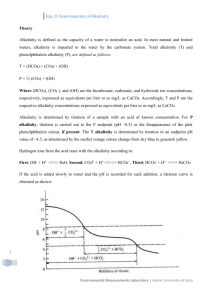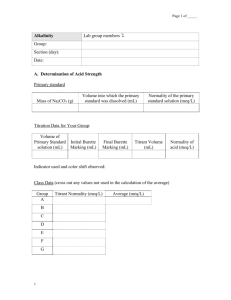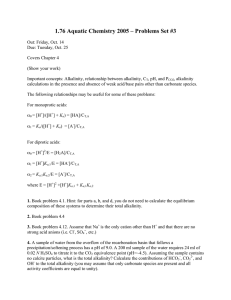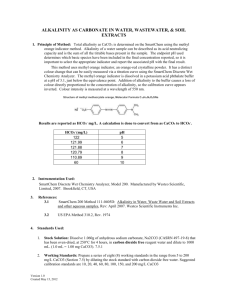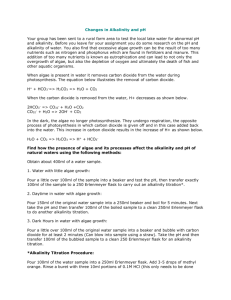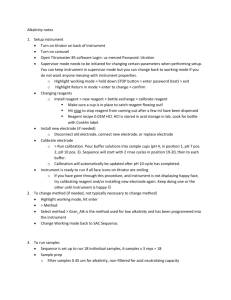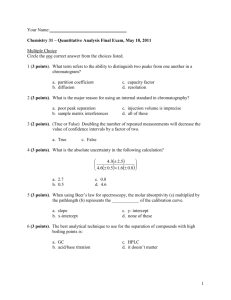UV-Vis and titration lab
advertisement
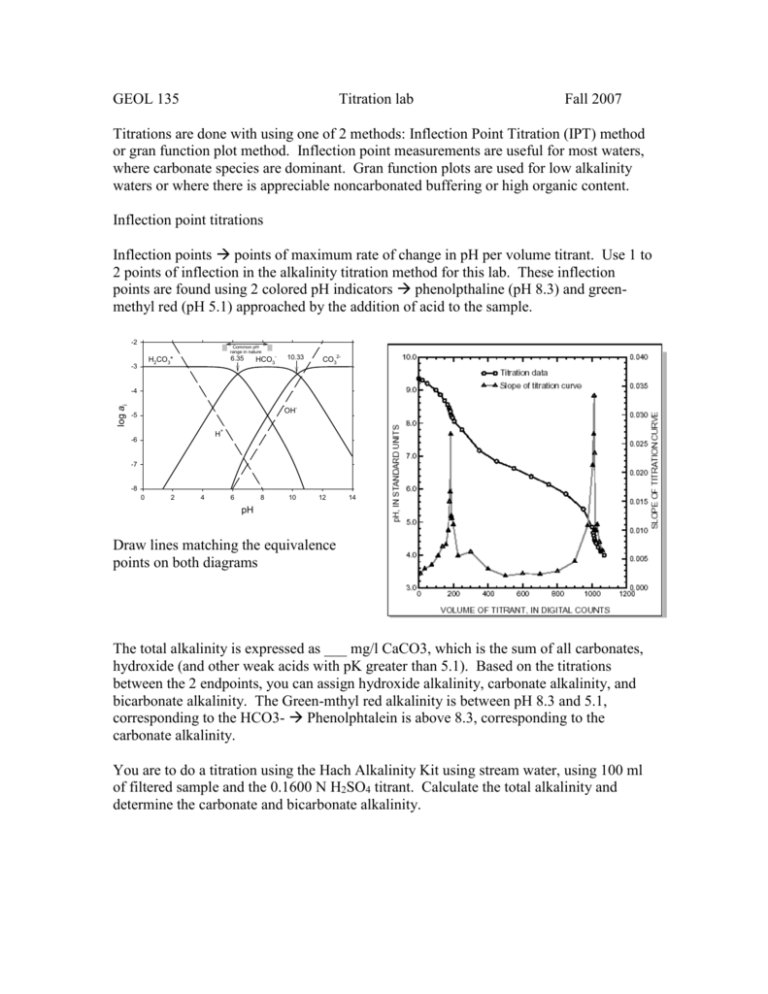
GEOL 135 Titration lab Fall 2007 Titrations are done with using one of 2 methods: Inflection Point Titration (IPT) method or gran function plot method. Inflection point measurements are useful for most waters, where carbonate species are dominant. Gran function plots are used for low alkalinity waters or where there is appreciable noncarbonated buffering or high organic content. Inflection point titrations Inflection points points of maximum rate of change in pH per volume titrant. Use 1 to 2 points of inflection in the alkalinity titration method for this lab. These inflection points are found using 2 colored pH indicators phenolpthaline (pH 8.3) and greenmethyl red (pH 5.1) approached by the addition of acid to the sample. -2 Common pH range in nature 6.35 H2CO3* -3 HCO3- 10.33 CO32- log ai -4 OH- -5 + H -6 -7 -8 0 2 4 6 8 10 12 14 pH Draw lines matching the equivalence points on both diagrams The total alkalinity is expressed as ___ mg/l CaCO3, which is the sum of all carbonates, hydroxide (and other weak acids with pK greater than 5.1). Based on the titrations between the 2 endpoints, you can assign hydroxide alkalinity, carbonate alkalinity, and bicarbonate alkalinity. The Green-mthyl red alkalinity is between pH 8.3 and 5.1, corresponding to the HCO3- Phenolphtalein is above 8.3, corresponding to the carbonate alkalinity. You are to do a titration using the Hach Alkalinity Kit using stream water, using 100 ml of filtered sample and the 0.1600 N H2SO4 titrant. Calculate the total alkalinity and determine the carbonate and bicarbonate alkalinity. You will then repeat this using the pH meter instead of the indicators. Calibrate the pH meter using pH 4, 7, and 10 buffers. Then, set up the pH meter to that the tip is in the sample solution in a 250 ml Erlenmeyer flask. Slowly add titrant and record the pH and volume of titrant added at each step. Go slowly, you need to record the pH and titrant volume enough times to be make a plot of their change! Titrations using unfiltered samples measure not only the buffering that occurs with dissolved ions undergoing acid/base reactions, but also with any suspended solids or colloids in the water sample. These titrations are often termed acid neutralizing capacity. For a stream water, perform a titration using your pH meter to record the pH changes with added titrant but with an unfiltered sample from the stream.
